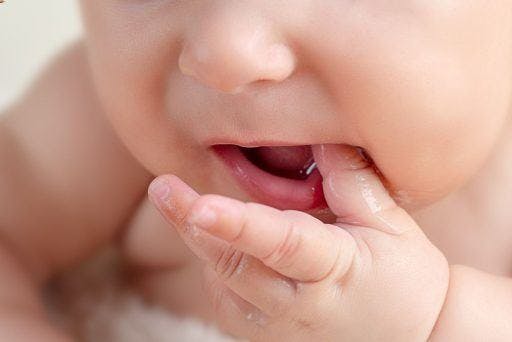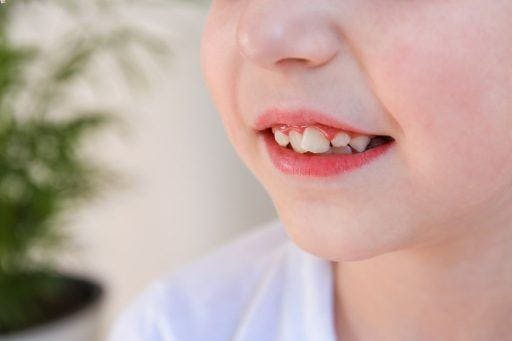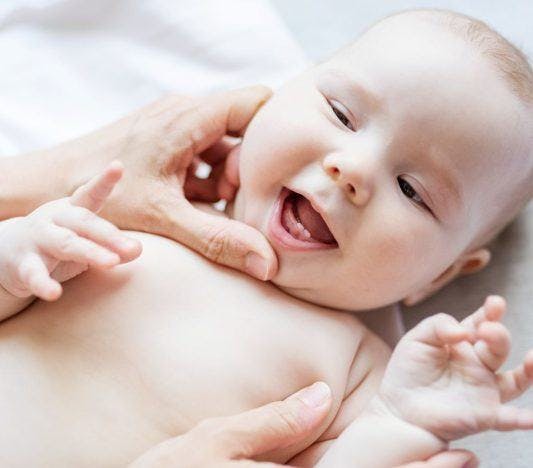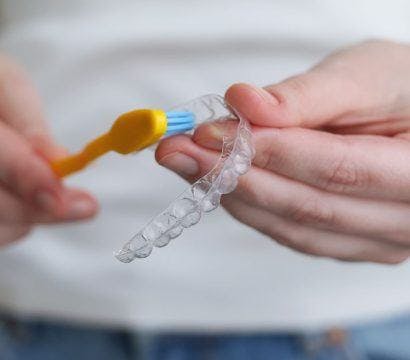Want to know if your child is starting to grow their first set of teeth or if they’re being fussy for another reason? Thankfully, it’s easy to tell when your little one is at this developmental stage. Here are a few teething symptoms you can expect and what to do about them.
When Does Teething Begin for Infants?
Teething usually happens when they’re six to 12 months old. However, the timing can vary – some babies might experience it sooner or later.
How to Know if Your Baby is Crying From Teething

Every child is different, so not all signs of teething will manifest for everyone. Some may not even show any baby teething symptoms at all. According to experts from the Australian Dental Association (ADA) and the American Academy of Paediatrics (AAP), these are some of the most common symptoms of teething in infants.
1. Sore or tender gums
Gums can swell because of baby teeth pushing through to the surface. This pressure can lead to inflammation and tenderness, which can cause some discomfort for your little one. You can expect them to become irritable, but don’t make the mistake of solely attributing crying and sleeplessness to teething. If you notice your baby bawling more than usual during this period, see your paediatrician for a checkup.
2. Drooling and mild rashes
Your baby’s body may respond to teething by producing more saliva to relieve tender gums. Babies also typically put their hands, toys, and other objects in their mouth to self-soothe, leading to even more drooling. When saliva gets on their mouth, chin, and neck, the moisture and bacteria can trigger a mild rash. Be sure to keep these areas clean and dry to avoid irritation.
3. Chewing and biting
Teething babies will want to nibble on everything for relief and stimulation. Instead of letting them go wild on their fists, fingers, and whatever they can reach, it’s safer to redirect their energy by giving them appropriate teething toys. Watch them closely and keep choking hazards at a distance.
4. Fussiness and irritability
It’s normal for infants to be extra cranky during this uncomfortable time. Since they can’t speak, they can only express their frustration by crying and being particularly fussy. You may also have trouble with feeding them as they’ll resist added pressure to their gums.
5. Tooth buds
Tooth buds will feel like small, rounded bumps along your baby’s gums. Eventually, these buds will erupt into teeth. According to the AAP, the lower bottom teeth (lower central incisors) are usually the first to come up. By age three, most children should have a full set of baby teeth.
Some infants may have trouble sleeping, lose their appetite, and develop fevers, but most experts consider these symptoms abnormal for teething. Diarrhoea, ear-tugging, and severe rashes (especially when they don’t improve with home care) may also be a cause for concern. If your baby exhibits these symptoms, it’s best to bring them to the doctor to rule out other illnesses.
How to Soothe Your Teething Baby

The best thing a caregiver can do for a teething infant is to give them loads of comfort and attention. Keep them close and be generous with cuddles to ease their distress. Other soothing techniques include massaging their gums with a clean finger and giving them smooth, sturdy rubber toys or chilled (not frozen!) teething rings or damp washcloths to chew on.
The ADA, AAP, and the American Dental Association advise against using homeopathic teething tablets, amber beads and necklaces, and numbing gels with belladonna or benzocaine. For safety, ask your doctor for guidance on the right products for your child.
Babies should go to their first dental appointment after their first tooth erupts and no later than their first birthday. If teething hasn’t started by the time they’re 12 months old, you should still bring them to a dentist. These checkups are essential for monitoring your child’s dental development, detecting and treating early signs of tooth decay, and getting advice on caring for their oral health.
Should You Be Worried About Crooked Baby Teeth?

The Australian Society of Orthodontists (ASO) confirms that children with crooked baby teeth will presumably need orthodontic treatment later in life. Some causes of misalignment include habits that interfere with tooth movement, like thumb-sucking and prolonged pacifier use. Genetics also play a significant role in how someone’s teeth develop. Children with a family history of crooked teeth are more likely to have the same issue.
The ASO recommends that children see a registered specialist orthodontist for an assessment between the ages of eight to 10. These dental care providers can evaluate your child’s existing teeth, predict the growth of future dentition, and spot potential issues early. If crookedness is a concern, ask them about preventive measures and long-term treatment plans.
Traditional braces are the most common fix for misaligned teeth among adolescents. But invisible aligners, like ClearCorrect, are rapidly gaining favour among those seeking a more discreet and comfortable solution. Discuss options with your child’s treating doctor. It’s never too early to start thinking about orthodontics!
Has your little one been showing teething symptoms? Congratulations – that means their first teeth are coming in! Use this as a general guide for navigating this exciting stage of your baby’s development. And don’t forget to consult your dentist for expert advice!
References:
American Academy of Pediatrics. (n.d.). Baby’s first tooth: 7 facts Parents should know. healthychildren.org.
American Dental Association. (n.d.). Teething. mouthhealthy.org.
Australian Dental Association. (n.d.-b). Baby and toddler oral health. teeth.org.au.
Orthodontics Australia. Does it matter if my child has crooked baby teeth?. orthodonticsaustralia.org.au.
Orthodontics Australia. (2023b). Benefits of early treatment. orthodonticsaustralia.org.au.
Seattle Children’s Hospital. (n.d.). Teething. seattlechildrens.org.
Stanford Medicine Children’s Health. (n.d.-b). Teething. stanfordchildrens.org.



